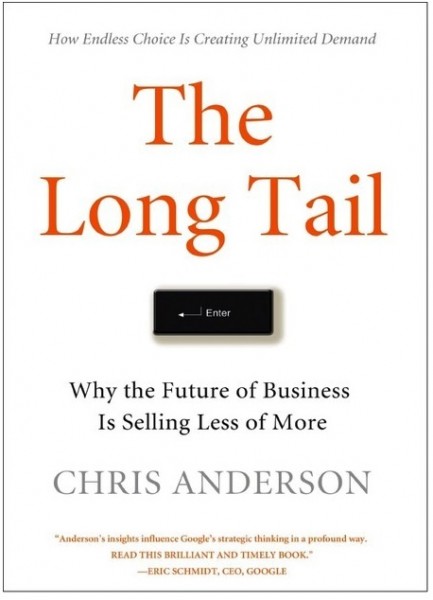by Chris Anderson
“Long tail” refers to the “other” 98% of a bell-curve that shapes supply and demand. This book is an eye opener in the sense that it makes us look at the size and potential of the mass of products that are not hits.
Why should you care about the non-hits? Because the internet (the most under-hyped phenomenon of the past decades) is radically re-shaping the way business is done, mainly through three dynamics:
1. The means of production are available to anyone in the digital economy
2. Transaction costs and shelf-space costs are close to 0 in this digital economy
3. “Wisdom of crowds”: your brand is no longer a logo or a slogan: it is the story your customers tell about your product.
Chris Anderson does a very good job at explaining these dynamics in depth and as an economist it is great to read innovating reflections on Adam Smith, Vilfredo Pareto, Karl Marx and very basic concepts such as transaction costs, distribution, shelf space and (above all) scarcity. Therefore, I think any economist should read this book.
I should have read this one before WWGD (What Would Google Do) because a lot of thoughts by Jeff Jarvis become clearer once you have a look at the dynamics and the mechanics of the new economy.
For example: when Jarvis proclaims “Be a platform instead of a destination” you intuitively feel that it makes sense, but in The Long Tail you will find out that it also makes economic sense: be a platform for the many niches of the long tail instead of a head/hit -destination. The latter is only for the happy few and demands lots of financial investments. Therefore I think it is interesting to read this book first and then dive into Jarvis’ WWGD.
In short: I highly recommend this book for anyone who wants to understand the dynamics of the digital economy.


